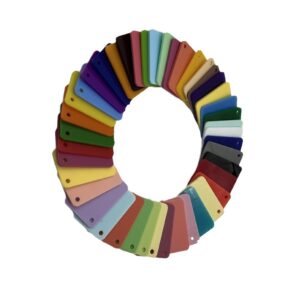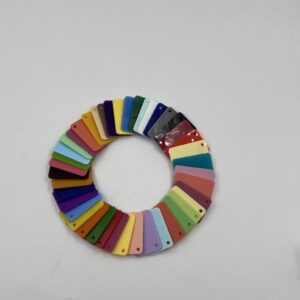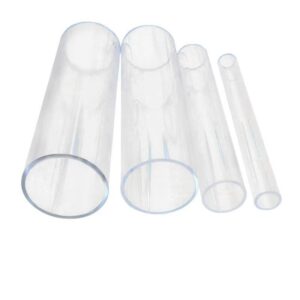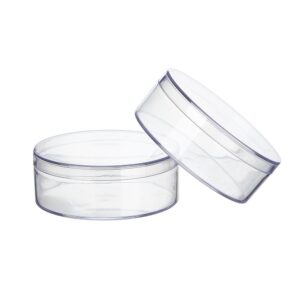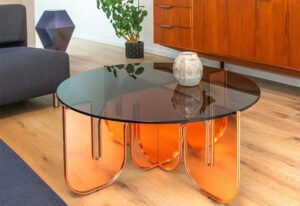Summary
Acrylic display cases are specialized enclosures designed to showcase products while enhancing their aesthetic appeal in various environments, including retail, exhibitions, and home decor. Their importance lies not only in their ability to protect and highlight valuable items but also in their impact on consumer behavior and purchasing decisions, making them a pivotal aspect of visual merchandising. Notably, research indicates that well-designed displays significantly increase customer engagement and perceived product value, driving sales and enhancing brand identity.
Table of Contents
Key design elements that contribute to the effectiveness of acrylic display cases include material selection, dimensions, and customizable features. Premium materials, such as high-quality acrylics like Perspex™ or Plexiglass™, are preferred for their clarity and durability, while proper sizing ensures that displayed items are presented attractively and securely. Additionally, innovative features like integrated lighting, adjustable shelving, and enhanced security mechanisms cater to both aesthetic and functional needs, allowing for versatile presentations that can captivate potential buyers.
Amid these design considerations, controversies may arise regarding sustainability and the environmental impact of acrylic production. As consumer awareness of eco-friendly practices grows, manufacturers are increasingly focusing on recycling and sustainable sourcing of materials, prompting a shift towards more environmentally responsible display solutions. Furthermore, the integration of technology, such as interactive displays and digital signage, is transforming traditional acrylic showcase methods, creating immersive shopping experiences that appeal to modern consumers.
Overall, the design of acrylic display cases encompasses a blend of aesthetics, functionality, and adaptability, making them crucial tools for effectively showcasing products across various contexts. The ongoing trends in customization and user engagement continue to reshape how these display cases are utilized, reflecting evolving consumer expectations and preferences.

Design Elements
Acrylic display cases are essential for showcasing products effectively while enhancing the aesthetic appeal of a space. Several design elements are critical in creating a great acrylic display case.
Materials and Craftsmanship
The choice of materials plays a pivotal role in the design of acrylic display cases. Premium materials such as glass, polished metals, and high-quality woods convey luxury and attention to detail, significantly impacting the overall visual appeal and durability of the display. Acrylic, particularly variations like Perspex™ or Plexiglass™, is often favored due to its lightweight nature, clarity, and ease of customization. The selection of inert and stable materials ensures the safety and preservation of the items displayed, avoiding harmful interactions that could arise from organic materials.
Dimensions and Fit
Custom sizing is one of the most significant advantages of acrylic display cases. Accurate measurements are essential to ensure that items fit perfectly within the case, preventing the issues associated with oversized or undersized displays. Proper clearance must be accounted for, allowing for any padding or mounts needed to secure the items. This precision in dimensions not only enhances the visual presentation but also ensures stability and ease of access for the displayed products.
Design Complexity and Features
The design complexity of acrylic display cases can greatly influence their functionality and visual impact. Incorporating features such as lockable doors, UV protection, and adjustable shelves enhances both security and versatility. For instance, LED lighting options can dramatically elevate the aesthetic of a display, transforming it from ordinary to extraordinary by highlighting the items within. Additionally, unique shapes—such as multi-compartment sections or rotating displays—allow for creative presentations that can captivate customer attention.
Stability and Vibration Control
Designing a display case that can withstand vibrations and external movements is crucial for protecting delicate items. The structural integrity of the case must be maintained to prevent the transmission of vibrations from surrounding areas. Stability measures should be taken during the design process to ensure that both the case and its contents remain secure, which is vital for maintaining the condition of the displayed items over time.
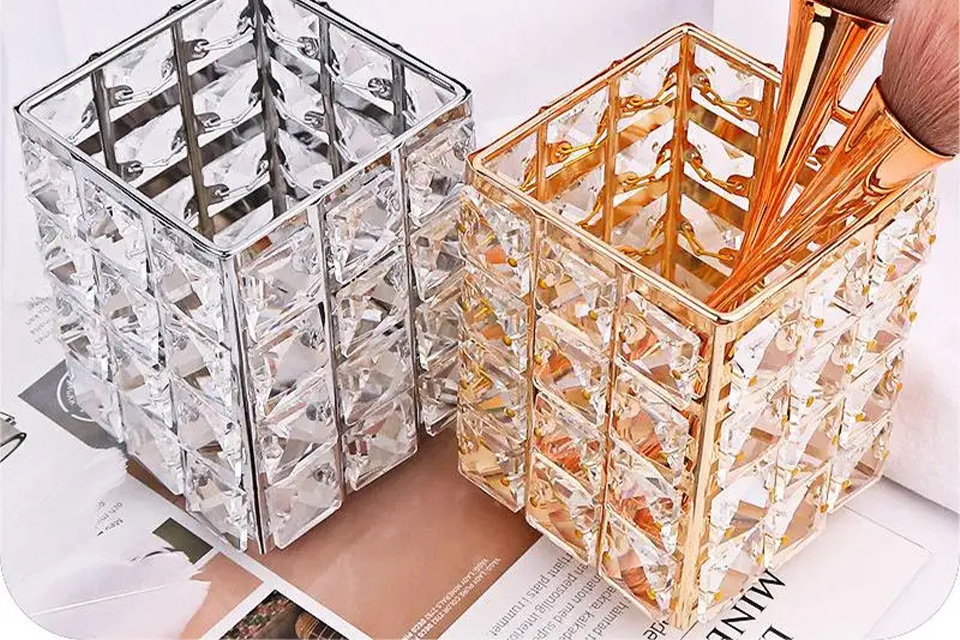
Aesthetic Considerations
Acrylic display case design plays a crucial role in enhancing the visual appeal of products while also providing functionality. The aesthetics of a display case can significantly influence consumer perceptions and purchasing decisions, especially in retail and exhibition contexts.
Design Aesthetics and Consumer Perception
Research has shown that design aesthetics positively impact consumers’ purchase intentions, as aesthetically pleasing products are perceived to have higher value. A well-designed display case not only highlights the products but also creates an inviting ambiance that draws customers in. The choice of colors, finishes, and lighting can enhance the overall aesthetic experience, fostering a stronger emotional connection between the consumer and the displayed items.
Color and Material Choices
Color plays a pivotal role in display aesthetics. Acrylic can be produced in a variety of colors, allowing designers to match the display cases with a brand’s color palette, thereby reinforcing brand identity. Additionally, the use of different finishes, such as matte or glossy, can further enhance the appeal of the display case, providing a professional image that can elevate the perceived value of the items inside.
Lighting Effects
Lighting is another critical aesthetic consideration. Integrated lighting can dramatically transform a display, drawing attention to key products and creating a warm, inviting atmosphere. It is advisable to use LED or fluorescent lighting to avoid excessive heat, which can be detrimental to the displayed items. The quality of light, measured by the Color Rendition Index (CRI), is also important; a CRI of at least 90 is recommended to ensure that colors are rendered accurately, enhancing the visual appeal of the display.
Customization and Adaptability
Customization of acrylic display cases is essential for creating a cohesive visual identity. Displays can be tailored in size, color, and design to fit specific products and retail environments. Modular and adaptable displays allow for flexibility, enabling businesses to modify their setups as needed while maintaining an aesthetically pleasing appearance. This adaptability is particularly beneficial in showcasing a range of products, from jewelry to food items, where different display needs may arise.

Functionality
Functionality is a critical aspect of acrylic display case design, as it encompasses the practical features that enhance user interaction and protect displayed items. A well-designed display case must facilitate easy access for maintenance and cleaning while ensuring security and environmental stability for the contents.
Access to Display Objects
Providing reasonable access to the objects within a display case is essential. This includes ensuring that the case allows for cleaning the interior, maintaining environmental control equipment, inspecting objects, and retrieving items for rotation or emergencies. Designers should consider the placement and weight of access doors to ensure they can be operated without disrupting adjacent items. Features such as rollers and temporary supports can make larger doors easier to manage, while walk-in cases may require specific interior pathways to facilitate access.
Environmental Control
For items sensitive to humidity and temperature fluctuations, the integration of climate control is crucial. Display cases can employ active or passive systems to maintain stable conditions. Active systems include mechanical devices that regulate humidity, while passive systems utilize hygroscopic materials to absorb or release moisture as needed. The effectiveness of a humidity-controlled case relies on minimizing air exchange with the surrounding environment and incorporating monitoring devices to alert staff to any malfunctions.
Security Features
Security is paramount in display case functionality, particularly for valuable or vulnerable items. Effective security measures can include dual locking systems, movement sensors, alarms, shatterproof security glazing, and tamper-resistant hardware. Cases should also be designed to withstand environmental threats, utilizing fire- and water-resistant materials to protect contents during disasters. The incorporation of pollution absorbers like activated charcoal can further safeguard displayed items from chemical contaminants, ensuring their long-term preservation.
Practical Additions
Incorporating additional features such as sliding doors, mirrors, or rotating designs enhances product accessibility and visual appeal. Moreover, the aesthetic elements, including lighting and color choices, play a significant role in creating an inviting shopping experience, as they can evoke positive emotions and align with brand identity. Designers should also keep abreast of changing customer preferences and emerging technologies to ensure that display cases remain relevant and effective in engaging potential buyers.

Practical Applications
Retail Environments
Acrylic display cases play a crucial role in retail settings, enhancing product visibility and customer engagement. Statista reports that 70% of shoppers notice in-store displays, which significantly influences purchasing decisions. Retail psychology suggests that the placement of these showcases—particularly at eye level or in high-traffic areas—can drive impulse buying, accounting for 60% of in-store sales. For instance, a department store might use LED display showcases to create distinct zones for luxury items, effectively separating them from budget options and boosting perceived value and sales.
Home Decor
Beyond retail, acrylic display cases are increasingly popular in home decor, allowing individuals to showcase collectibles and personal treasures with elegance. Their minimalist design complements various interior styles while providing an organized and stylish way to display items like trophies or rare collectibles. For example, a wall-mounted acrylic case can effectively display awards in a game room or provide a sophisticated touch to a gallery showcasing art.
Educational and Interactive Displays
In educational contexts, acrylic display cases can house interactive product demonstration stations, blending physical elements with digital experiences to engage customers. This method not only informs consumers about product features but also enhances their shopping experience by creating a dynamic and informative environment. For instance, a cosmetics store might incorporate an interactive station where customers can learn about skincare products through engaging displays that encourage hands-on exploration.
Customization for Specific Needs
The customization of acrylic display cases is essential to meet diverse requirements across different environments. Factors such as the size and type of items to be displayed, desired protection level, and aesthetic preferences all play a role in the design process. Jayi, with over 20 years of experience in customizing acrylic display cases, exemplifies how effective communication with clients can lead to tailored solutions that enhance functionality and visual appeal.
Trends in Acrylic Display Case Design
Acrylic display cases have evolved significantly, reflecting broader trends in design, sustainability, and consumer engagement. These trends are shaping the way products are showcased, enhancing both aesthetic appeal and functionality.
Sustainability and Eco-Friendliness
As consumers become more environmentally conscious, the demand for sustainable materials in display design has increased. Acrylic is a recyclable material, allowing display cases to have a second life after their initial use, thereby supporting sustainable practices. Retailers are increasingly opting for eco-friendly acrylic options that align with their values and appeal to eco-conscious shoppers. Many manufacturers are responding by producing recycled acrylic displays that maintain clarity and durability while reducing waste and conserving resources. This shift not only helps the environment but also enhances a brand’s reputation among consumers who prioritize sustainability.
Integration of Technology
The integration of digital technology into acrylic display cases is a notable trend that transforms the customer experience from passive viewing to active engagement. Interactive displays are becoming popular, utilizing touch screens, augmented reality (AR), and virtual reality (VR) to captivate consumers. This evolution allows for immersive experiences, such as interactive product demos or gamified storytelling, which help brands create memorable interactions with their audience. By blurring the lines between physical and digital realms, these advanced displays foster deeper connections with customers.
Customization and Versatility
Customization remains a key trend in acrylic display case design, with an emphasis on tailoring displays to meet specific product needs and brand identities. Retailers are now viewing display cases not merely as furniture but as storytelling tools that enhance the shopping experience. Custom options enable businesses to adjust size, materials, and finishes to create a showcase that aligns perfectly with their merchandise and environment. Additionally, features like integrated lighting, adjustable shelving, and security systems are increasingly incorporated to enhance both aesthetic appeal and practical functionality.
Focus on User Engagement
Modern acrylic display cases are designed to engage consumers actively. Retailers are implementing features that allow for customer interaction, such as QR codes that unlock exclusive content or interactive elements that provide product details. This shift towards creating engaging shopping environments is aimed at enhancing customer connection with products, making visits to stores more impactful and memorable.
Integration with Signage
Acrylic display cases not only serve to showcase products elegantly but also integrate seamlessly with signage to enhance the overall shopping experience. The combination of acrylic displays and effective signage creates a cohesive presentation that can significantly influence customer engagement and purchasing decisions.
Custom Signage Solutions
Acrylic sheets can be customized for various signage needs, making them an ideal choice for retail environments. From promotional displays to informative signs, these acrylic solutions can be tailored to fit the theme of an event or the aesthetic of a store. For instance, during special events like galas or exhibitions, acrylic signage can provide essential information while maintaining a sophisticated appearance.
Enhancing Visibility and Clarity
Effective signage is crucial in guiding customers through a retail space. Custom-made acrylic signs ensure that information is communicated clearly and quickly, allowing shoppers to make informed decisions without the clutter often found in traditional displays. For example, vibrant colors and clear messaging on acrylic signs can capture attention and draw customers to specific products or promotions, making it easier for them to navigate the space.
Interactive Features
Incorporating interactive elements, such as QR codes, into acrylic displays and signage further enhances customer engagement. These codes can link to product details or promotional offers, allowing customers to access information easily while maintaining an aesthetically pleasing display. This approach not only adds a layer of interactivity but also aligns with modern consumer expectations for immediate access to product information.
Psychological Placement Strategies
The strategic placement of acrylic displays in conjunction with signage can create a powerful visual impact. Positioning these displays at eye level, paired with informative signage, captures shopper attention effectively and encourages impulse purchases. Retailers can leverage this by designing their displays to be near high-traffic areas, such as checkout counters, where additional signage can prompt last-minute buying decisions.





